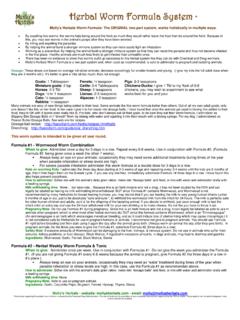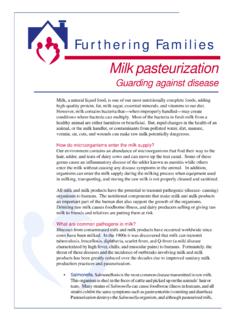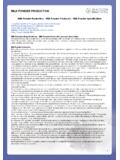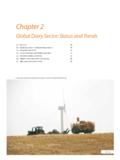Transcription of Milk Stand / Goat Stand Plans - Fias Co Farm- Dairy …
1 Fias Co Farm Copyright - 2011 Molly Nolte Page 1 of 6 milk Stand / Goat Stand Plans Brought to you by Fias Co Farm Copyright - 2011 Molly Nolte If you construct this Stand , please make a donation to the Fias Co Farm web site to help support all the free information it provides. #support Or send a donation check to: Molly Nolte 4659 Seneca Drive Okemos, MI 48864 Tools needed: Saw Jig Saw Phillips Screwdriver Tape Measure Hammer Square Sand Paper/Sander Drill with bits: 1/8 , 3/32 , 5/32 , 11/32 , 11/16 Hints: Note that lumber is not actually the size it is called. For example, a 2X4 is not really 2 inches by 4 inches. Read and understand the entire step before actually doing it. Predrill holes before screwing using the 1/8 bit. When attaching the wood together with your screws, make sure not to hit any screws or tacking nails that you have already driven in from the other side.
2 Material list: Lumber (note: we do not use pressure treated lumber) 1 x 8 x 10 parts A Cut into three 36 pieces (2) 1 x 4 x 6 parts B & F Cut into four 36 pieces 1 x 4 x 8 parts C & E Cut into two 20 1/2 pieces & two 18 pieces 1 x 4 x 8 parts G & H Cut into four 21 pieces & two 4 pieces 2 x 2 x 6 parts J Cut into three 20 pieces 2 x 4 x 6 parts D Cut into four - 14 pieces* *Parts D are the legs and their length may be adjusted, longer or shorter, if desired. The legs may be made from pressure treated wood if you wish. Fias Co Farm Copyright - 2011 Molly Nolte Page 2 of 6 Material list continued: Box 2 Exterior deck screws (4) 3 Exterior deck screws A couple dozen 1 1/2 Exterior deck screws (2) 3 Corner Brace with screws (also called corner brackets) (1) x #20 x 2 slotted round head machine screw (1) wing nut (1) x #20 hex nut (2) flat washers (1) 4 hook and eye latch with extra eye Handful of 1 finish nails (for tacking) Constructing the Base: 1.
3 Lay 2 legs (2 x 4 x 12 ) part (D) (Fig. 1) down with one 20 1/2 end piece (C) across the top, flush with the top ends. Secure with 2 screws. Repeat process for opposite end. 2. Attach both sides (B) 1 x 4 x 36 (Fig. 2) with 2 screws. 3. Attach braces (J), 2 x 2 x 20 to the 1 x 4 sides (parts B) (see Fig. 2 & 3) flush with the top of parts (B) and 12 apart using 2 screws through parts (B) into parts (J). 4. Check base for square (Fig. 3). Adjust if necessary. Fias Co Farm Copyright - 2011 Molly Nolte Page 3 of 6 5. Screw three 1 x 8 x 36 pieces (A) to base (Fig. 4) . Keep square as you go. Screw around edges and to the braces using the 1 screws. 6. Sand all edges and round off corners. Constructing the Head Gate: 1. Cut one 18 piece (E1) as follows: From one corner, measure over and mark the width at the top at 3.
4 From the same corner, measure down the length 5 and mark. Draw a line from the first mark to the second and cut. See Fig. 5 left side part E1 has a black dotted line indicating this angle cut. 2. Lay out the two 18 pieces (E1 & E2) and place two 21 pieces (G) across, with top flush and bottom 4 from ends of part (E) (Fig. 5). Use 1 finish nails to tack structure in place without going through the other side. Turn over and put two more 21 pieces (G) into place in the same manner. In effect sandwiching the (E) parts. See Fig. 6 This is what it should look like. Secure with 2 screws from both sides - Indicated by blue dots is Fig. 5. NOTE: Use an opposite triangle pattern on the reverse side so you do not hit the screws coming from the other side. Fias Co Farm Copyright - 2011 Molly Nolte Page 4 of 6 3.
5 Cutting the Head hole : (Refer to Fig. 7.) Cut a notch in two of the 1 x 4 x 36 (F1 & F2) beginning 4 from the top and down 13 from the first cut with a depth of 1 . Cut entrance and exit in a curve that will not bind your jigsaw 4. Cut the bottom of (F1) as follows: From the inside corner (same side as the head hole- see Fig. 7), measure 3 across width and mark. From the same corner measure up the length 4 and mark. Draw a line from mark to mark and cut. This piece (F1) is the movable portion of the head gate. Sand well so no splinters are present and parts move easily. 5. Insert and slide the part (F2) (not cut at an angle on the bottom) between parts (G). Place from center on (G) and 4 below bottom part (G). Secure with 2 screws. 6. Slide part (F1) into the head catch (see fig. 7). Make sure it has been sanded enough to allow free movement within the head gate.
6 Line up part (F1) 1 from part (F2) already installed. 7. Drill a hole with a 11/32 bit through the lower part (G), (Fig. 7), part (F1) that moves, and part (G) on opposite side. Use a 13/16 bit to enlarge the hole on both sides on both sides no more than deep. This allows x 20 x 2 slotted round screw with x 20 hex nut to be recessed. Install the bolt: place one washer on the 2 slotted round crew, place screw though bolt hole, place another washer on the screw and then the hex nut. Tighten. 8. Attach 1 x 4 x 4 (H) to upper part (G) (Fig. 7) at the X marks that will face away from the base of the Stand . Predrill holes to keep these parts from splitting and attach with 2 screws. Fias Co Farm Copyright - 2011 Molly Nolte Page 5 of 6 9. Attach parts (J), 2 x 2 x 20 , to parts (H) (Fig. 8). Center and attach using two 3 deck screws on each end.
7 This will hold the removable feeder. See photo below. Note: We found that eventually we needed to add a thin furring strip to (J) so the feeders we used would fit a little more snuggly. You can adjust later to suit your needs. 10. Sand all edges and round off corners Attach Head Gate to Base: Refer back to Fig. 4. Enlist the aid of a helper. 1. Hold the head gate with the feeder holder facing away from the base, so that the bottom of part (G) rests on the base surface (A). 2. Attach assembled head gate onto base using 2 screws though parts (E1, E2 & F2). DO NOT put screws through (F1). Fias Co Farm Copyright - 2011 Molly Nolte Page 6 of 6 3. Attach the Corner Braces to the head gate and base by as shown in photo . Install Head Gate Closure: Attach 4 hook and eye latch to head gate side facing toward the base.
8 Normally, the closed position allows the tops of the head gate (F) to touch. Additional eyes can be installed for thicker necked animals (like bucks and wethers). See photos. Adjusting to suit your needs: We removed some of the wood from one (F) piece so that it would close even tighter to accommodate younger kids (two months old). In this case, when using the Stand for kids, the gate is secured closed by wrapping a bungee cord around it.







